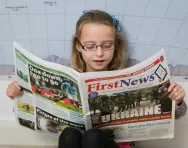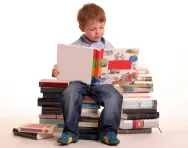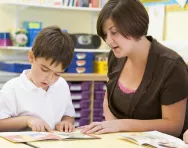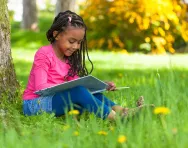Important update from TheSchoolRun
For the past 13 years, TheSchoolRun has been run by a small team of mums working from home, dedicated to providing quality educational resources to primary school parents. Unfortunately, rising supplier costs and falling revenue have made it impossible for us to continue operating, and we’ve had to make the difficult decision to close. The good news: We’ve arranged for another educational provider to take over many of our resources. These will be hosted on a new portal, where the content will be updated and expanded to support your child’s learning.
What this means for subscribers:
- Your subscription is still active, and for now, you can keep using the website as normal — just log in with your usual details to access all our articles and resources*.
- In a few months, all resources will move to the new portal. You’ll continue to have access there until your subscription ends. We’ll send you full details nearer the time.
- As a thank you for your support, we’ll also be sending you 16 primary school eBooks (worth £108.84) to download and keep.
A few changes to be aware of:
- The Learning Journey weekly email has ended, but your child’s plan will still be updated on your dashboard each Monday. Just log in to see the recommended worksheets.
- The 11+ weekly emails have now ended. We sent you all the remaining emails in the series at the end of March — please check your inbox (and spam folder) if you haven’t seen them. You can also follow the full programme here: 11+ Learning Journey.
If you have any questions, please contact us at [email protected]. Thank you for being part of our journey it’s been a privilege to support your family’s learning.
*If you need to reset your password, it will still work as usual. Please check your spam folder if the reset email doesn’t appear in your inbox.
Books or e-books: which are best for your child?

If your child is a reluctant reader but can happily spend every spare minute glued to their laptop or tablet, giving them e-books to tempt them into reading sounds like a great idea. But with many purists arguing that printed books are far superior to e-books, you might be afraid that letting your child read on screen could do more harm than good.
According to recent research by the National Literacy Trust, though, e-books aren’t just a good alternative to paper books, but could actually have some surprising advantages.
How e-books benefit your child
The National Literacy Trust’s study into the impact of e-books on children’s reading attitudes, attainment and behaviour revealed positives across the board. Children’s reading ability improved as a result of using e-books, and the effect was particularly marked in boys: over the four-month study, the average boy’s reading level increased by over eight months. Girls benefited too, with their reading level going up by over seven months.


Claim A FREE Book Reviews Activity Pack!
- A huge collection of creative writing & reading comprehension resources
- Explore texts, deepen understanding, share opinions
- For Year 1 to Year 6
Using e-books doesn’t just have a positive impact on reading ability, according to the study. The number of boys who had previously found reading difficult fell, and twice as many thought reading was ‘cool’ after the project.
E-books can also encourage reluctant readers to discover a newfound passion for the written word, with two thirds of the least enthusiastic readers saying they enjoyed reading using technology after the study. Interestingly, this has a knock-on effect on their enjoyment of printed books: only 10 per cent of the children involved in the study said they enjoyed reading on paper before the study, but afterwards, 40 per cent did. ‘This suggests that being given access to e-books might open up a wider world of reading to children who are reluctant readers,’ says Irene Picton of the National Literacy Trust, who led the project.
So why are e-books so great?
There are a variety of reasons why children may find e-books more engaging than printed books. ‘Some children say they find reading on paper uncomfortable because the print is too small and there are too many words on the page,’ Irene explains. ‘Being able to change the print size when reading an e-book makes them easier to read.’ Other studies have suggested that this could have particular benefits for children with special educational needs like dyslexia or visual processing disorders.
The accessibility of e-books makes them attractive to children, too. ‘Young people often have their tablet or phone on hand, so it’s more convenient to read an e-book on their device rather than taking a paper book out with them,’ Irene says. They also have the advantage of looking ‘cooler’ than paper books: children are less likely to be self-conscious about being seen reading if they’re using technology to do it.
The reason why boys in particular benefit from reading e-books is unclear. One theory is that boys spend more time on computers than girls and are more comfortable with them in general, which makes digital reading a more appealing option. ‘It’s a format that they’re familiar with, and that has a dramatic impact on their reading attainment and enjoyment,’ Irene says.
Can e-books replace printed books?
All reading is good reading, and if a child won’t touch paper books but will happily devour e-books, then of course it makes sense to make them easily available. But ideally, children should spread their reading time across e-books and printed books.
‘Children need to be encouraged to read a range of different formats: print books, e-books, audio books, comics, newspapers and magazines,’ explains Irene. ‘We’ve always advocated giving children a choice over their reading material, as this is a great motivator, so I would also recommend giving them a choice of reading formats.’
That said, paper books do have some advantages over e-books. Research shows that children who read print books daily report higher levels of reading enjoyment compared to those who only read on screen, and are more likely to exceed their expected reading age. ‘Some children will prefer one to the other, but the more choice we can offer, the better the chance of getting children to discover themselves as readers,’ Irene says.
What’s the right age for e-books?
At the moment, the range of e-books for children and young people is limited, although it’s expanding by the day. ‘Our research looked at children aged seven to 16, as the selection of e-books for children under seven is even narrower,’ Irene explains. ‘However, there are some lovely story apps and games that are great for children who are learning to read, alongside paper books.’
What about the screentime issue?
The issue of whether reading on an e-reader or other electronic device counts as screentime is a thorny one, and it can be difficult to negotiate if you’re trying to limit the amount of time your child spends on screens. The America Academy of Pediatrics, for example, currently recommends a strict two-hour daily limit on screentime (although this guidance is under review), and says parents should provide alternatives – like reading.
There are also issues with screens being used late at night, affecting children’s sleep. Bluelight devices like laptops and tablets are the worst offenders, whereas e-readers don’t have the same issues with screen flicker, but there are suggestions that even these might make it hard for children to wind down.
Ultimately, how you choose to implement screentime – and whether you include digital reading in your child’s daily ration – is up to you. But if you’re playing it safe, you can’t go far wrong with a traditional bedtime story from a printed book.








